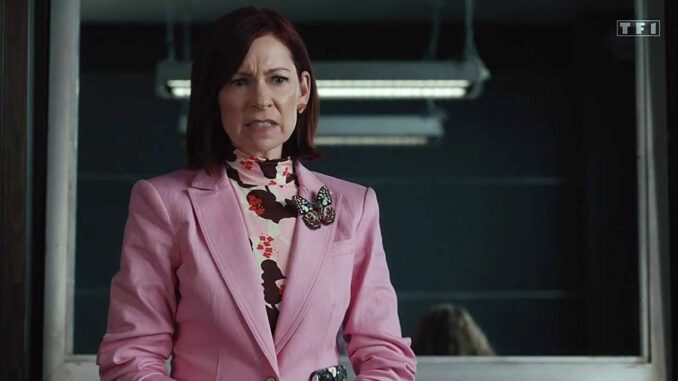
How ‘Elsbeth’ Reinvents the Legal Drama: From The Good Wife to Her Own Spotlight
The legal drama, a venerable staple of television, has long thrived on a familiar recipe: high-stakes courtroom battles, morally ambiguous protagonists, intricate legal maneuvering, and a often cynical view of justice. From the intense procedural grit of Law & Order to the sophisticated political commentary of The Good Wife and its fiery spin-off The Good Fight, the genre has evolved, but its core tenets remained largely consistent. Enter Elsbeth Tascioni, a character once a deliciously eccentric supporting player, now the whimsical heart of her own series, Elsbeth. In granting this peculiar genius her own spotlight, the show doesn’t merely spin off a popular character; it fundamentally reinvents the legal drama, transforming it from a weighty examination of the law into a delightful, inverted “howdunit” powered by a kaleidoscope mind.
For fans of The Good Wife and The Good Fight, Elsbeth Tascioni was a recurring jolt of delightful chaos. With her flouncy outfits, non-sequitur observations, and seemingly scatterbrained demeanor, she was often underestimated, only to reveal a razor-sharp legal mind capable of cutting through the densest of cases. She was the firm’s secret weapon, a brilliant, if bewildering, asset deployed when all other strategies failed. Her appearances were a breath of fresh air amidst the weighty moral dilemmas and political machinations of the Florrick and Reddick/Boseman firms. In those series, Elsbeth was a tool of justice, an unconventional key to unlock a specific legal problem.
Elsbeth, the series, however, elevates her from a mere instrument to the maestro of her own orchestra. The most striking reinvention lies in its structural departure from the traditional legal procedural. Where classic legal dramas are “whodunits” – the audience, along with the protagonists, works to uncover the culprit and then build a case – Elsbeth largely operates as a “howdunit.” Each episode opens by showing us the crime and the perpetrator. The tension isn’t in discovering who did it, but in watching how Elsbeth, a police observer for the NYPD, will connect the seemingly disparate dots and expose the killer, often through their own elaborate machinations. This inverted structure immediately shifts the focus from the grand, dramatic reveal to the intricate, psychological dance of observation and deduction. It’s less about the shock of discovery and more about the sheer pleasure of witnessing a brilliant mind at work.
This “howdunit” format is perfectly suited to Elsbeth’s unique cognitive style. Unlike the jaded, morally compromised titans often found at the center of legal dramas (think Alicia Florrick’s quiet resilience or Diane Lockhart’s weary cynicism), Elsbeth maintains an almost childlike wonder and an unflappable optimism. Her genius isn’t in memorizing legal precedents or engaging in fiery courtroom rhetoric; it’s in her unparalleled ability to observe human behavior, to spot incongruities, and to make intuitive leaps that bypass conventional logic. Her “distractions” – her seemingly irrelevant questions about someone’s outfit, their job, or a casual remark – are, in fact, her brain processing information through a unique lens, uncovering the crucial, often psychological, weakness in the perpetrator’s carefully constructed façade. She doesn’t just solve cases; she deciphers people, turning psychological profiling into an art form.
Furthermore, Elsbeth reinvents the legal drama by shifting its primary battleground. While legal consequences naturally follow, the show’s real drama unfolds before the courtroom. It’s a detective story disguised as a legal drama, or perhaps, a forensic psychological puzzle with a legal wrapper. Elsbeth isn’t just a lawyer; she’s a fish-out-of-water outsider in New York City, assigned to observe the NYPD following a high-profile scandal. This setup provides her with an organic reason to be present at crime scenes and interrogations, giving her ample opportunity to gather her “clues” from the periphery. The power dynamics are different; she’s not arguing for a client in a courtroom, but slowly, inexorably, tightening a net around a suspect through sheer observational brilliance and a disarmingly guileless approach. The traditional trappings of a legal firm – office politics, firm finances, partner squabbles – are entirely absent, replaced by the vibrant backdrop of NYC and the compelling cat-and-mouse game between Elsbeth and the week’s villain.
Finally, the show’s tonal reinvention is perhaps its most liberating aspect. Where The Good Wife and The Good Fight often delved into the dark, cynical underbelly of American politics and justice, Elsbeth embraces a brighter, more whimsical, and genuinely funny aesthetic. Elsbeth’s vibrant, often impractical, outfits are a visual metaphor for the show itself – a splash of effervescent charm in a genre often cloaked in shades of gray. The humor is intelligent and character-driven, stemming from Elsbeth’s genuine quirks and the often-exasperated reactions of those around her. It’s a refreshingly lighthearted take on crime and justice, proving that profound intelligence and compelling storytelling don’t always require a somber, gritty veneer.
In essence, Elsbeth doesn’t just place a beloved character center stage; it rebuilds the stage itself. It takes the character’s inherent strengths – her observational genius, her unconventional approach, her unique worldview – and designs a narrative structure and a tonal landscape that perfectly amplifies them. From the high-stakes, morally complex world of The Good Wife to her own brightly lit, delightfully disorienting spotlight, Elsbeth Tascioni has not merely spun off; she has orchestrated a clever, charming, and genuinely innovative reinvention of what a legal drama can be, proving that sometimes, the most insightful path to justice is the one least expected.
